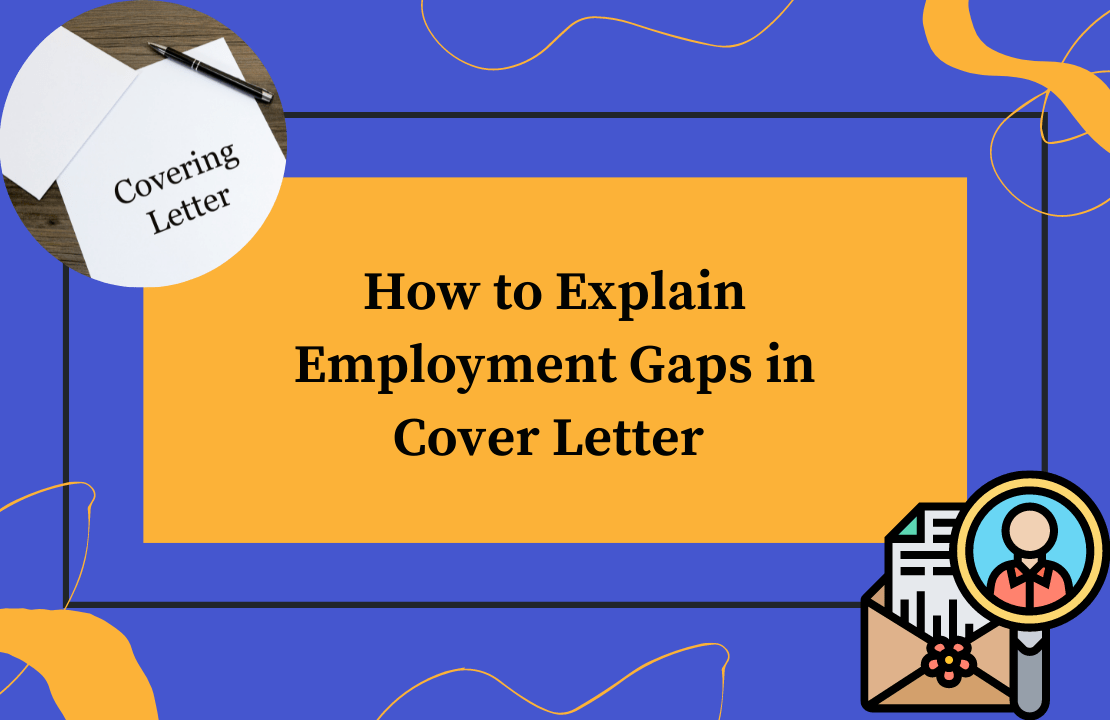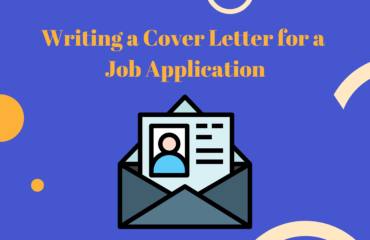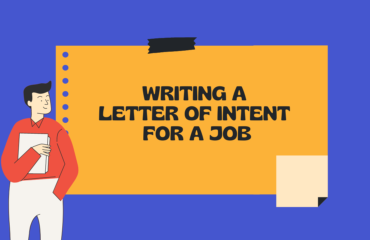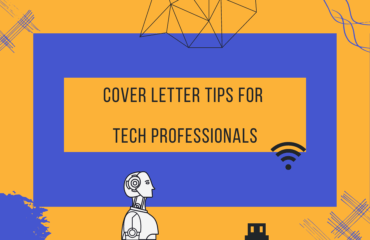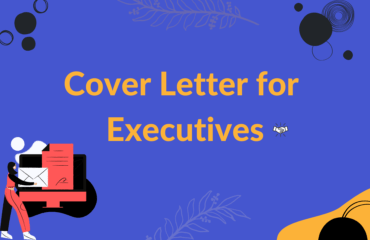Table of Contents
- 1) Be upfront and honest
- 2) Keep your explanation brief and direct
- 3) Include relevant skills and experience gained during the gap
- 4) Make sure to sound confident
- 5) Highlight the value you can bring to the table
- 6) Reiterate your interest in the position
- Example 1: Taking time off for a medical leave
- Example 2: Taking time off to be a caregiver
- Example 3: Taking time off to be a stay-at-home parent
- Example 4: Being laid off
An employment gap is considered to be one of the red flags during a job search. Irrespective of your reason for having a gap being valid, some employers may feel a bit hesitant about considering you for the position if they see unexplained, long-term breaks in your resume. Well, this is quite reasonable because they will be left out wondering what has happened in the past.
Explaining an employment gap can be intimidating. However, ignoring or disguising it won’t do you any good either. The most effective way to address any concerns your potential employer may have about your readiness for a job is through a cover letter. In this article, we will share tips on how you can do this effectively.
1) Be upfront and honest
The best way to deal with employment gaps is through honesty. While it might be tempting to cover it up by, for instance, altering the dates, being honest always works in someone’s favor. Hence, no matter what the situation is, never lie about your employment history. Even if you have nothing to hide, any fabrication your potential employer finds out can be a ground for your disqualification.
Explaining employment gaps upfront shows hiring professionals that you are trustworthy, making you stand out from other candidates. So, whether the gaps in your employment are positive or negative, we strongly suggest addressing them in your cover letter. This can also help clear misunderstandings and prevent employers from making assumptions about your credibility as a potential employee.
2) Keep your explanation brief and direct
Hiring professionals don’t need a ton of personal details explaining every phase of your employment gap. All they need are the core facts that can reassure them that you are able and 100% ready to return to work. So, instead of spending more than a couple of sentences over-explaining the gap in your experience, show that your situation will no longer affect your future work. This way, they won’t be worried that you might have to take another break from working if they consider you for the position.
Your cover letter should focus on your experience, skills, passion, and fit for the job. So, limit your explanation to two to three sentences. Avoid sharing information that can do you more harm than good. For example, don’t go into detail about your negative relationship with your previous employer. While you should not lie about your reason, you don’t have to go overboard. Remember, honesty doesn’t necessarily mean giving every detail of the gap or disclosing sensitive information.
3) Include relevant skills and experience gained during the gap
Explaining a gap is about convincing recruiters that being unemployed for a certain period doesn’t negatively impact your capacity to succeed at a particular job. For a good employer, how you spend your time out of the workforce is usually more important than the reason behind your employment gap. Hence, if you spent your time adding value to your candidacy by pursuing a program related to your desired career, make sure to convey it in your cover letter.
In addition, you can include examples of daily responsibilities you’ve done, as long as you can relate these to the job you’re applying for. It can be volunteer work, community service, freelance gigs, or any activities that enable you to improve your skills or learn new ones. This can help you demonstrate that you can be a valuable addition to the team despite having a gap in your experience.
4) Make sure to sound confident
When explaining your employment gap, you don’t want to sound like you’re ready to take on any available jobs that come your way. It may seem understandable, especially if you haven’t had any interviews ever since you’ve tried to return to the workforce. However, it can negatively impact an employer’s perception of you. You can be viewed as someone who’s not really passionate about what you do, affecting your chances of advancing to the next stage of the application process.
So rather than showing desperation about getting the job, you have to sound like you are being selective and focused on ensuring you find the perfect fit for the long term. Avoid mentioning something about your unsuccessful job search in the last couple of months – it’s never a good idea. Instead, focus on proving to them that you have the necessary skills to perform the job.
5) Highlight the value you can bring to the table
While addressing your employment gap clearly and positively is important, showcasing the value you offer as a potential employee is key. When talking about your experience, make sure to emphasize those with direct relevance to your target role. Include samples of your past achievements that demonstrate how your skillset can help potential employers achieve their desired results.
We highly recommend reading the job descriptions carefully so you can better relate your past experiences to the company’s needs. Then, focus the content of your cover letter on the future and what you want to do for your potential employer. This can help you convince them that you’re ready for a long-term work commitment.
6) Reiterate your interest in the position
Showcasing genuine interest and enthusiasm in the position and company can be your strong selling point. Thus, it is imperative to go the extra mile to know more about the company, its culture, mission, values, recent achievements, and what they offer. This way, you can better convey what excites you about the position or why the company is your employer of choice after being out of the workforce for quite some time. Also, you can better demonstrate that you’re not just capable of doing the job but also share the same values and your goals align with them.
Here are some examples of how you can effectively explain your employment gaps:
Example 1: Taking time off for a medical leave
After taking some time off from my career to undergo surgery, I left XYZ Corp. to focus on my recovery. As I regained my strength, I signed up for relevant online classes to stay current in the industry. Now fully recovered, I am motivated to return to the full-time workforce and confident that I will be a valuable asset to your team.
Example 2: Taking time off to be a caregiver
I took time away from my professional career to care for an elderly relative. After a year, my family decided to hire a full-time caregiver, so I no longer need to be present. I am now fully available to work and very excited when I learn about your job opportunity, as it’s a perfect match for my qualifications and career goals.
Example 3: Taking time off to be a stay-at-home parent
After taking a break to start my own family, I am eager to continue my career now that my children are all school-aged. To keep my skills and connections current, I participated in various volunteer works, including leadership roles in charitable organizations. I am confident that the ability I have gained thus far will allow me to succeed as the next potential General Manager of your firm.
Example 4: Being laid off
Seven months ago, ABC Enterprise made the difficult decision to dissolve its operations, so I am currently available for immediate employment. I am enthusiastic about pursuing my career in software development and was very excited when I learned about your vacancy as it’s a perfect match with my qualifications and career goals.
There is no such thing as a gap that is too long as it depends on several factors. However, being unemployed for more than six months could raise a red flag and is suspicious to employers, especially if they remain unexplained. So, make sure to address the issue in your cover letter briefly and in a way that convinces hiring professionals that you’re a capable hire. We understand that this can be daunting. Hence, if you need assistance, you can always reach out to us.
